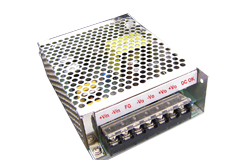nyheder
Kvalitetskontrol i DC-DC konverter fremstilling: Fabrikkens rolle
Author: ZYG Power Module Time: 2023-3-31
Quality control is an essential aspect of any manufacturing process, and DC-DC converter manufacturing is no exception. DC-DC converters are electronic devices that convert DC voltage from one level to another, and their quality is critical in many applications, including telecommunications, data centers, and medical devices. The role of the factory in ensuring the quality of DC-DC converters cannot be overstated, as they are responsible for implementing and monitoring quality control measures throughout the production process.
In this article, we will discuss the role of the factory in quality control in DC-DC converter manufacturing, including the measures they take to ensure that the products meet the highest quality standards.
Quality Control Measures in DC-DC Converter Manufacturing
The quality of a DC-DC converter depends on several factors, including the selection of components, design, assembly, and testing. The factory must ensure that each of these steps meets the required quality standards to produce a reliable and durable product.

Component Selection
The first step in ensuring quality is selecting the right components for the DC-DC converter. The factory must work with reputable suppliers and choose components that meet the required specifications. Components that do not meet the specifications can result in a faulty product, leading to increased failure rates and warranty claims.
Design and Assembly
The design of a DC-DC converter must be optimized for its intended application, and the assembly process must be carefully controlled to ensure consistency and reliability. The factory must follow a strict set of guidelines to ensure that the design and assembly meet the required standards.
Testing
The final step in quality control is testing the DC-DC converter to ensure that it meets the required specifications. The factory must perform various tests, including functional testing, electrical testing, and environmental testing, to ensure that the product is reliable and durable.
Role of the Factory in Quality Control
The factory plays a crucial role in quality control in DC-DC converter manufacturing. They are responsible for implementing and monitoring quality control measures throughout the production process to ensure that the products meet the highest quality standards.

The following are some of the roles that the factory plays in quality control in DC-DC converter manufacturing:
Implementing Quality Management Systems
The factory must have a robust quality management system in place to ensure that all processes are controlled and documented. This includes processes for component selection, design and assembly, and testing. The factory must also establish procedures for handling non-conforming products, including identification, quarantine, and disposition.
Conducting Quality Audits
The factory must conduct regular quality audits to ensure that the quality management system is working effectively. Audits can identify areas of improvement and help to prevent quality issues from occurring. Audits can also provide insight into the effectiveness of quality control measures and help to identify areas for improvement.
Supplier Quality Management
The factory must work closely with suppliers to ensure that the components they provide meet the required specifications. This includes establishing a supplier qualification process, conducting regular supplier audits, and ensuring that suppliers have adequate quality control measures in place.
Design and Assembly Control
The factory must ensure that the design and assembly process are controlled and consistent. This includes establishing clear work instructions, training employees, and monitoring the process for deviations. The factory must also have a process for identifying and correcting design or assembly issues that arise.
Testing and Inspection
The factory must conduct thorough testing and inspection to ensure that the products meet the required specifications. This includes functional testing, electrical testing, and environmental testing. The factory must also establish procedures for handling non-conforming products identified during testing and inspection.
Conclusion
Quality control is critical in DC-DC converter manufacturing, and the factory plays a vital role in ensuring that the products meet the highest quality standards. The factory must implement and monitor quality control measures throughout the production process, including component selection, design and assembly.
Tidligere: Skræddersyede løsninger med Kina AC-DC-konverter: Opfylder dine unikke strømforsyningsbehov
relevant information
-
2023-7-12
AC DC Converter SPM Series: Efficient Power Conversion for Your Electronics
Introduction: In today's digital age, electronic devices have become an integral part of our lives. From smartphones to laptops, from televisions to refrigerators, we depend on these devices for our daily activities. However, all these devices require power to function, and that's where AC/DC converters come into play. The SPM Series AC/DC converter is a cutting-edge solution that offers efficient power conversion for your electronics. Let's delve deeper into its features and benefits. Efficiency and Reliability: One of the key features of the SPM Series AC/DC converter is its high efficiency. With an efficiency rate of up to 95%, the converter minimizes power loss, resulting in lower energy consumption and reduced electricity bills. Its advanced design ensures stable and reliable...
Se detaljer -
2023-6-6
China DPX Series DC DC Converter manufacture
DC DC converters are widely used in a variety of electronic devices to convert one voltage level to another. The DPX series DC DC converter is a type of power converter that is designed to convert high voltage DC input into low voltage DC output with high efficiency. It is commonly used in applications such as automotive, industrial, and telecommunications. Features of DPX Series DC DC Converter The DPX series DC DC converter is a highly efficient power converter that offers many features, including: 1. High Efficiency: DPX series converters have an efficiency of up to 96%, which means that they can convert a large percentage of input power into output power. 2. Wide Input Voltage Range: These converters can...
Se detaljer -
2023-6-24
Bidirectional DC DC Converter: Principles, Topologies, and Applications
A bidirectional DC-DC converter is a power electronic device that can transfer electrical energy bidirectionally between two DC voltage levels. It is widely used in various applications, including electric vehicles, renewable energy systems, and battery energy storage systems. This article will explore the principles, topologies, and applications of bidirectional DC-DC converters. Principles of Bidirectional DC-DC Converter The main function of a bidirectional DC-DC converter is to transfer power from one DC voltage level to another. The power transfer can be either unidirectional or bidirectional. A bidirectional converter can transfer energy from a high voltage source to a low voltage load and vice versa. Bidirectional DC-DC converters typically consist of two power converters, each with its own power switch and control...
Se detaljer -
2023-4-12
Creating an AC-DC Converter: A Guide to Converting Alternating Current to Direct Current
If you work with electronics, you may find yourself needing to convert AC (alternating current) to DC (direct current) at some point. This can be done with a simple AC-DC converter circuit. In this guide, we walk you through the process of creating your own converter circuit. First things first, let\ explain the difference between AC and DC. Alternating current is the kind of electricity that comes out of your wall socket. It oscillates back and forth, changing direction 50 or 60 times per second. Direct current, on the other hand, flows in one direction only. Most electronic devices require DC to function. To create an AC-DC converter, you need a few basic components. These include a transformer, a diode...
Se detaljer -
2023-4-25
how to wire ac to dc power supply
When it comes to converting AC to DC power, there are a few different methods that can be used. However, one of the most common and straightforward ways to accomplish this is by using a power supply. Here's a step-by-step guide on how to wire an AC to DC power supply: Step 1: Determine the voltage and current requirements Before you begin, it's important to know what voltage and current requirements you have for your DC load. This will help you choose the right power supply for your needs. Step 2: Choose the type of power supply There are two main types of power supplies: linear and switching. Linear power supplies are simple and provide a smooth output, but they...
Se detaljer -
2023-4-24
How to Build an AC-DC Power Supply
Introduction An AC-DC power supply is an essential component in many electronic devices, providing a constant and reliable source of power. These power supplies can be used in a wide range of applications, from powering small electronic devices like smartphones to larger appliances like refrigerators and air conditioners. Building one of these devices is a relatively simple process, and can be done with some basic knowledge of electronics and a few common components. Step 1: Choose the Transformer The first step in building an AC-DC power supply is to choose an appropriate transformer. The transformer will convert the AC voltage from the wall outlet into a lower voltage that can be used by the power supply. The voltage needed will...
Se detaljer


















